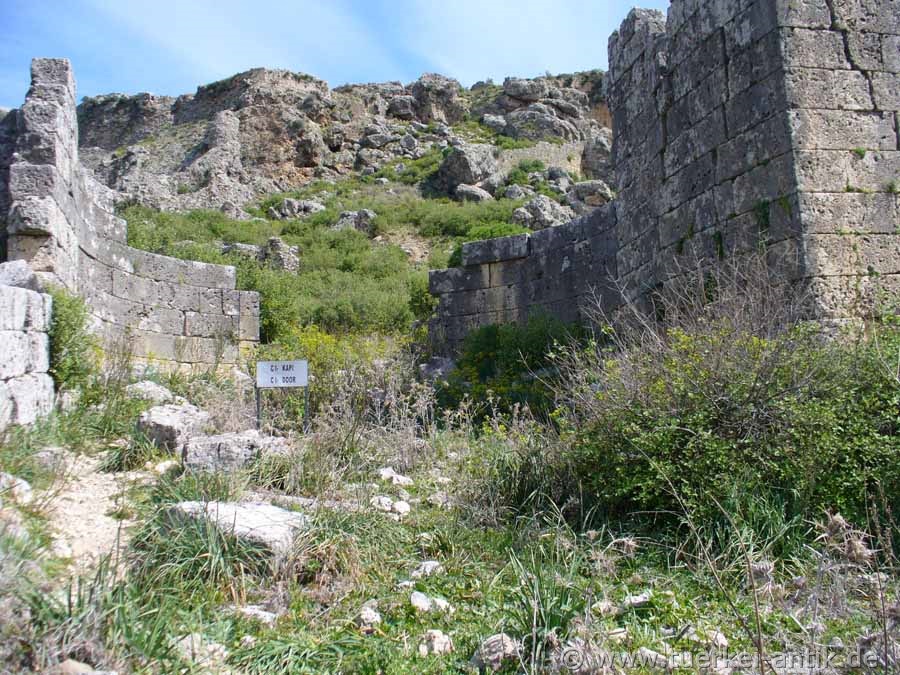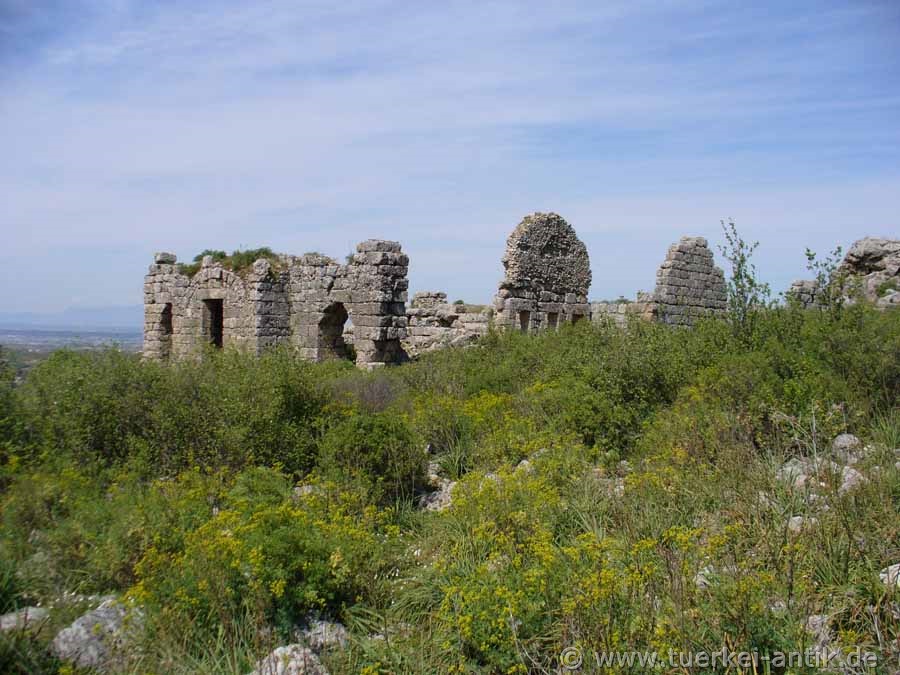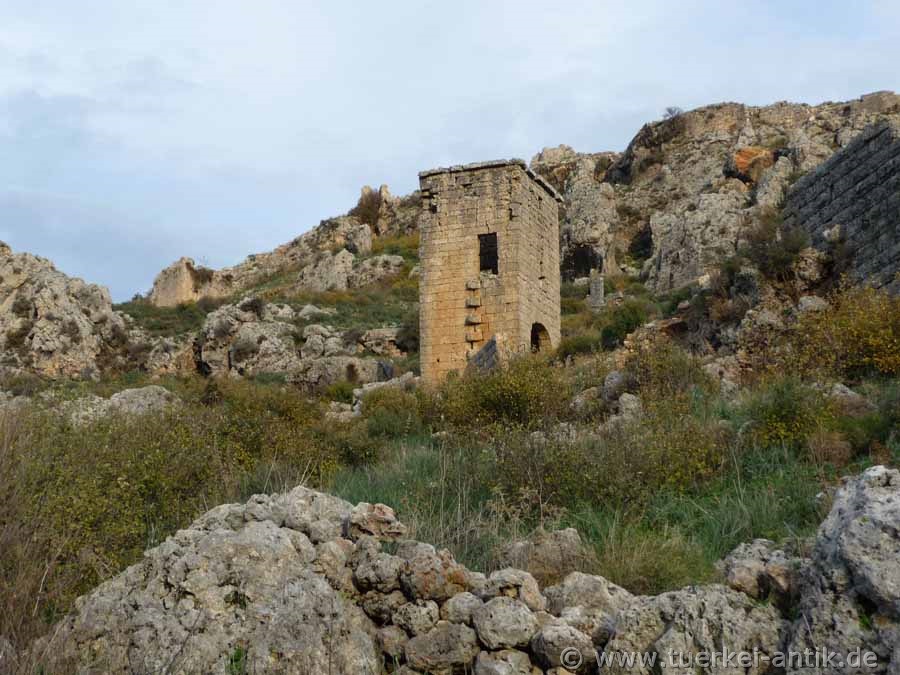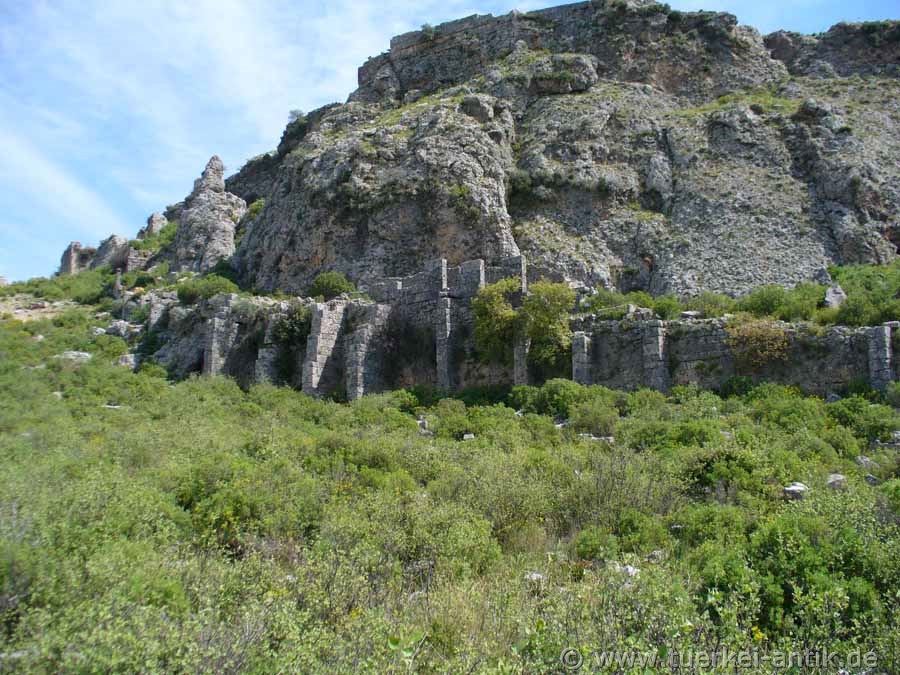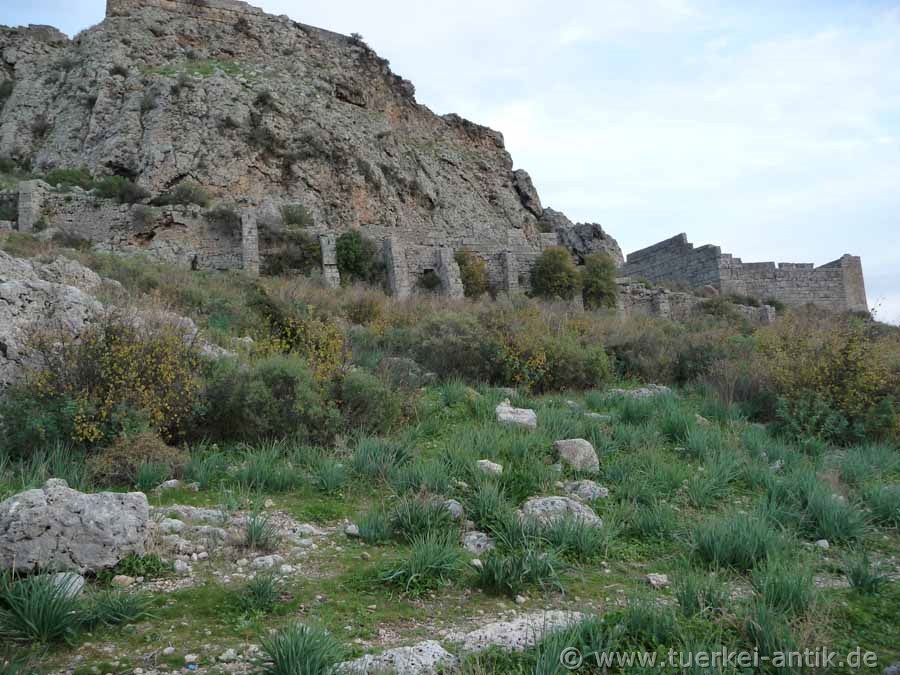 |
| Sillyon | |||
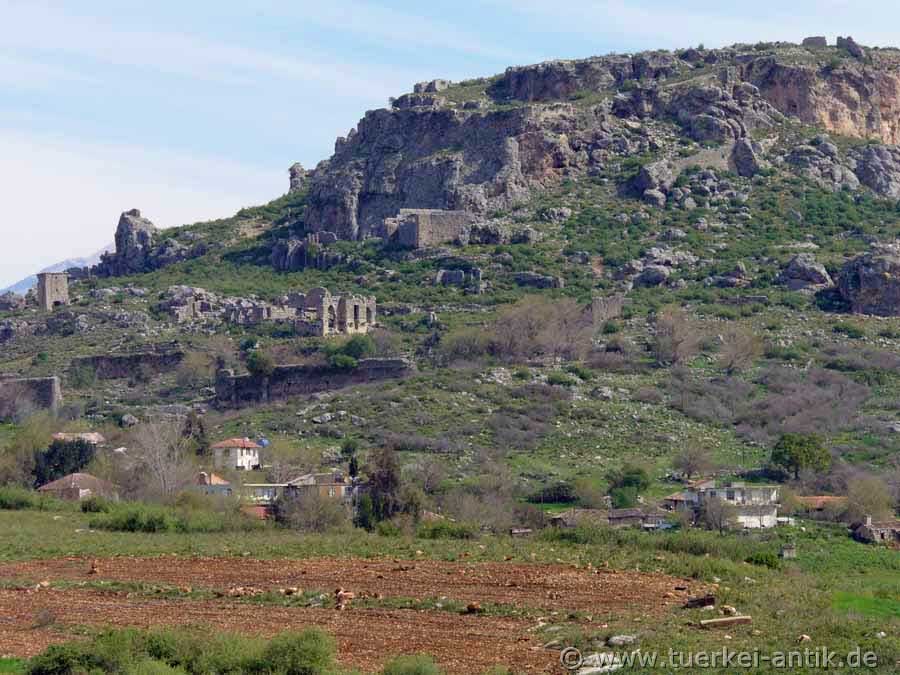 |
|
||
| Sillyon | |||
|
Little is known about Sillyon from history. The remains of the city, however, document a millennia-long history. |
|||
|
|
|||
| Hellenistic City Gate | |||
|
Sillyon was probably founded about 3000 years ago. After the Trojan War, parts of the Greek army had become independent and founded settlements all over the eastern Mediterranean, including the cities of Aspendos and the Perge within sight. It is reported in a tradition that the legendary seer Mopsos was involved in the foundation of the city. |
|||
|
|
|||
| Ruin of the Gymnasion, above the stadium. | |||
|
|
|||
| Watch tower | |||
|
Sillyon was first mentioned in the writings of the geographer Skylax in the fourth century BC. Alexander the Great invaded Sillyon in 333 B.C. and stationed important troops there. Later the city was massively developed for defence purposes. In the eventful history of the city, it experienced periods of prosperity time and again. Within sight of the sea and nearby Perge, the city must have been of considerable strategic importance. Along with Aspendos, Perge and Attaleia (today Antalya), it was one of the most important cities in Pamphylia. Finds point to the beginning of coinage in the 3rd century B.C.. |
|||
|
|
|||
| The Ramp | |||
|
From a gate system with two defence towers, a ramp leads to another gate on the plateau. It is supported by a Hellenistic wall. This ramp had become necessary to reach the growing Hellenistic city on the plateau by carts. The city was famous for this ramp in the ancient world. |
|||
|
|
|||
| The Ramp | |||
|
Not much is known about the city from Roman times. In Byzantine times Sillyon became a bishop's residence. From the Seljuk period (1038-1194 A.D.) there are remains of buildings and a small mosque on the plateau. The city was completely abandoned from the 13th to 14th century A.D. and slowly decayed. The inhabitants mainly migrated to Perge and the better fortified Attaleia (Antalya). |
|||
|
|
|||
|
|
|||
|
The former theatre |
|||
|
Until the 20th century, landslides caused parts of the city to fall off the steep Table Mountain, most recently in 1969 the Odeon and the theatre's stage house. |
|||
|
On the southwestern part of the plateau lies the heart of the city. A large Byzantine building at full height and a Hellenistic building, probably a gymnasion of 6 metres in height, with ten windows of different sizes, have survived. Another, smaller Hellenistic building has an inscription in pamphlic language on a door post. Further east, on terraces, remains of houses and foundations of unidentifiable temples can be seen. A small mosque dates from Seljuk times. |
|||
 |
|||
|
The Seljuk Mosque |
|||
|
Sillyon lies approx. 23 km east of Antalya. Coming from Side, about 10 km behind Serik, opposite the exit to Belek, a road leads off to the right. The way to Sillyon is more or less well signposted. However, you can easily orientate yourself on the Table Mountain, which is about 200 m high and can be seen from afar. 22 km before Antalya another road leads to Sillyon. Drive in the direction of Abdurrahmanlar or Gebitz and then follow the signs. |
|||
| Photos: @chim | |||
| Translation aid:www.DeepL.com/Translator | |||
| Source: Wikipedia and others | |||
|
|
|||

